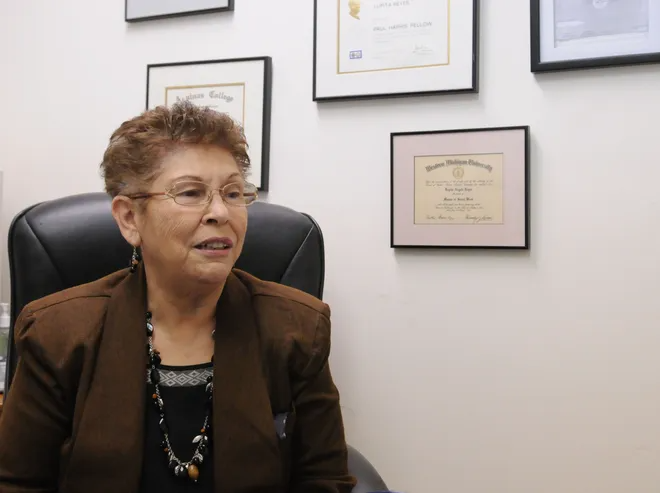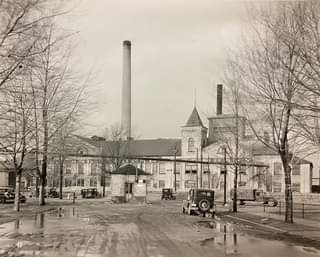Steve VanderVeen: Lupita Reyes and her nearly six-decade Holland radio show
1964 was a significant year for Lupita Reyes.
That was the year she asked WHTC station manager, Bill Gargano, why there were no radio shows for Holland’s largest and growing minority community.
After thinking about it, Gargano decided to give her a 25-minute time slot on Saturday evenings. “Are you kidding?” she said. “I know nothing about radio.”
More History: The story of Holland Sugar Company
Still, she accepted the challenge. But what would they call the show? When Gargano asked Reyes how she was most of the time, she said happy. From then on, they named the show “Alegria Latina.”

Later, the station moved the program to Sunday evenings, where Reyes was given a 180-minute time slot. She hosted the show for 57 years.
Before her retirement in 2021, the show featured Mariachi, Banda, Tejano, Bachata, Cumbias and Rancheras music — plus interviews, news and calls from listeners from all over the United States.
It was also in 1964 that Reyes, Maria Gaitan and Frances Gamez co-founded the Latin American Society, the forerunner of Latin Americans United for Progress. They believed that by banding together, Holland’s largest and growing minority community would have a stronger voice in determining local education and housing policies.
In addition, on behalf of the working poor, they lobbied for community services, jobs and emergency food and clothing. Three churches heard them and responded. In 1969, Hope Reformed — led by Hope College professor David Myers — Third Reformed and First Presbyterian founded the Community Help Center. Today, that organization is known as Community Action House.
Reyes' firsthand experiences drove her to action.
Reyes was born in 1937 near Brownsville, Texas, in Bluetown. Her stepfather was a mason and her mother cleaned houses. In 1945, Lupita and her mother immigrated to Holland. They came on the back of a truck loaded with 25 people, with only a tarp for a roof.

The trip took five days. Upon arriving in Holland, the driver dropped them off at the abandoned Holland Sugar Company, where Kollen Park Drive is today. Then, someone else transported them to Ninth Street, near Western Foundry, where the DeVos Fieldhouse is today. There, they moved in with an uncle and joined her father.
No one in Reyes' immediate family spoke English. Lupita’s father worked for Northern Woods Products, located in the old Charles Limbert plant, where Freedom Village is today. Her mother got a job working in the laundry of the Warm Friend Hotel in downtown Holland.
Subscribe: Learn more about our latest subscription offers!
An only child, Lupita stayed home with her relatives, except when she was in school. Her first neighborhood friend was a girl named Barbara, who had a physical disability. But the friendship didn't last because Lupita’s family kept moving.
The school Lupita attended wasn't initially a friendly place. Lupita’s mother enrolled her in the nearby Lincoln School, where Hope College’s Martha Miller Communications Center stands today.
Initially, her second grade teacher believed Lupita had a “learning disability.” Fortunately, when Lupita entered the third grade, the principal reclassified because Lupita had an advocate: her third grade teacher, Minnie Buter.
Buter felt that Lupita had a language disability, not a mental disability. Buter also supported Lupita in other ways. At that time, Lupita and her family lived off M-21 between Holland and Zeeland. Buter, who lived in Zeeland, would pick up Lupita in the mornings before school. After school, Lupita would have to walk home.

Later, Lupita’s parents enrolled her in the local Catholic school. There, the monsignor labeled her a “problem child.” In response, Lupita turned rebellious, and the school expelled her because, as the monsignor told her mother, “She is a bad influence on the other children and calls the nuns ‘penguins.’”
Her next school was Beechwood. There, she had a teacher, Mr. Maatman, who understood her. Then, her family moved again and enrolled Lupita in Van Raalte School. By then 13, Lupita was working as a dishwasher at Hoffman’s Restaurant, located on River Avenue between Eighth and Ninth Streets. She continued to work there, as a waitress, while attending Holland High School.
In her sophomore year, Lupita met with a school counselor and shared her dreams of becoming a nurse. But the counselor discouraged her, telling her she didn't have the grades to go to college.
“After that meeting,” recalls Lupita, “I just wanted to be done with school.”
To be continued.
— Steve VanderVeen writes about local business history. For a limited time, see his upcoming books at kickstarter.com/projects/holland-me/holland-and-me-the-series.
This article originally appeared on The Holland Sentinel: Holland History: Lupita Reyes and her nearly six-decade Holland radio show
